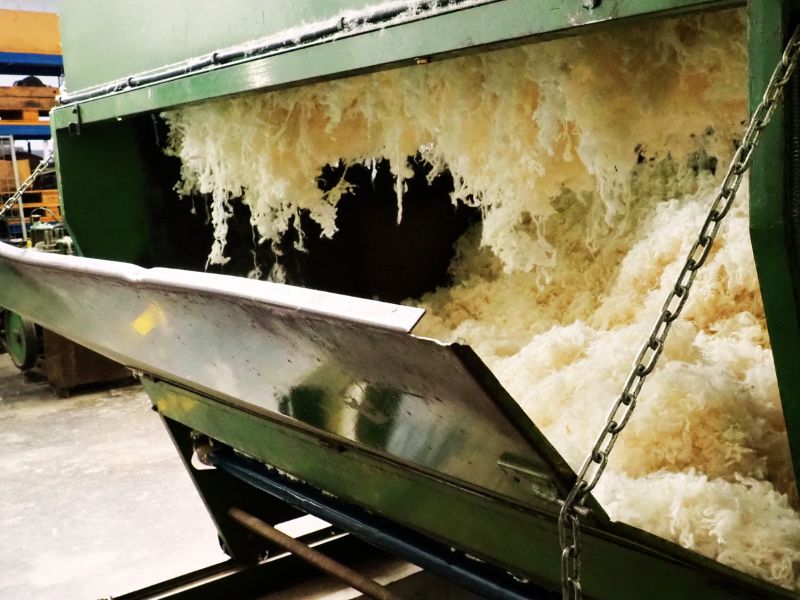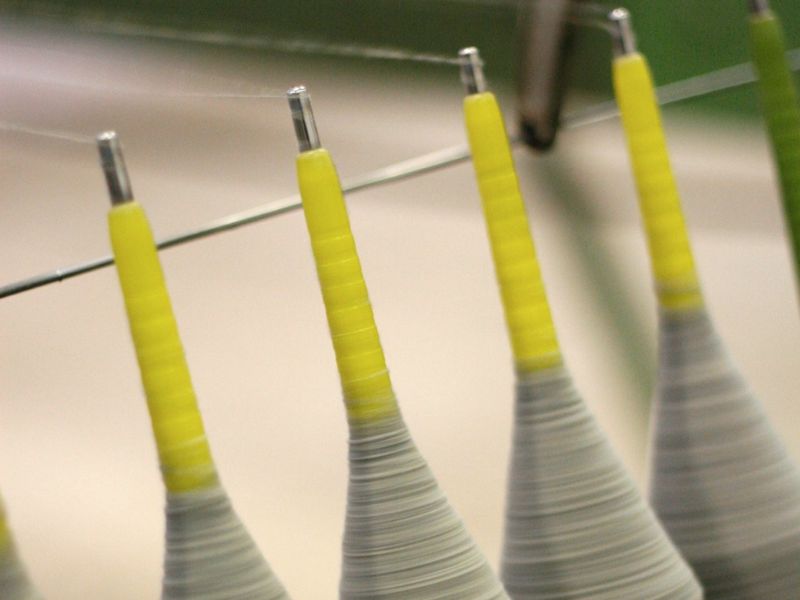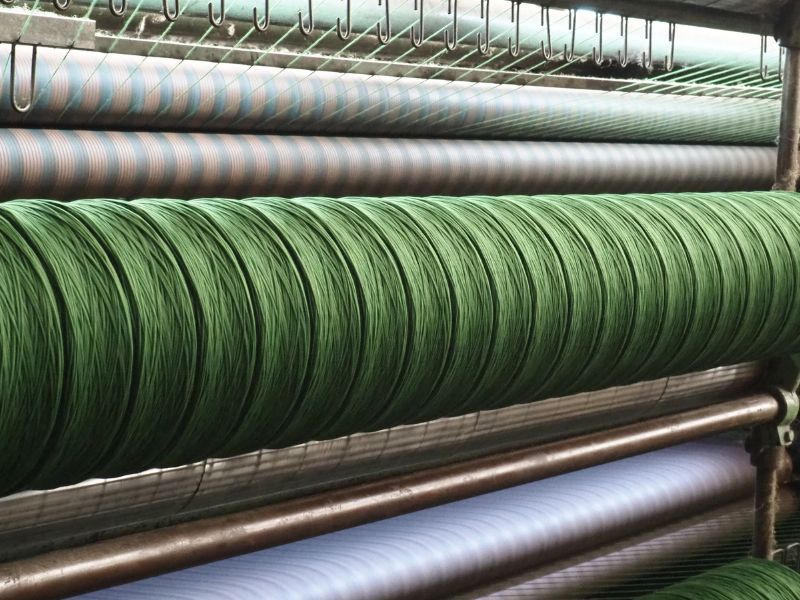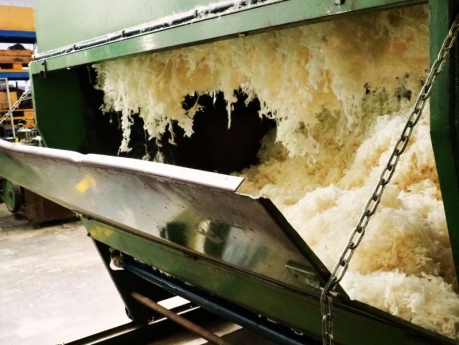Regenerated Yarns Vs. Traditional Yarns
Considering that the textile industry is one of the most polluting sectors in the world, the comparison between the use of regenerated yarns vs. traditional yarns is becoming more and more necessary.
At first glance, there are two competitive aspects that allow to focus on one or the other alternative, because for sustainable fashion purposes, regenerated yarns are much more successful.
But for the reduction of production costs and the acceleration of production, the use of traditional yarns tends to be a much more attractive alternative.
However, over the years and with the rapid development of technology, more and more measures are increasing the accessibility of regenerated yarn production, making it a favourable option for reducing environmental impact.
Likewise, the production of garments with sustainable yarns generates an undeniable added value that transcends to the corporate image of the brand, increasing even the reliability of consumers.
In this article we will tell you what are the competitive advantages between the use of recycled yarns compared to traditional yarns, and what are the analytical estimates on the textile industry in the medium term.
MANUFACTURING PROCESS REGENERATED YARNS VS. TRADITIONAL YARNS
A key step in managing the production of textile materials is the choice between using conventional yarns or regenerated yarns, such as those produced by reusing cotton or polyester staple fibre.
In both cases there is an arduous process of material selection and conditioning involved, all of which results in an efficient textile material for the production of quality garments.
However, many companies are increasing their interest in the use of naturally sourced materials and recycling measures in fashion.
This is not only as a way of bringing quality and more environmentally conscious clothing to the market, but also by sharing a renewed approach that can convey brand values and be incorporated as part of the company's hallmark.
Manufacture of regenerated yarn
The manufacturing techniques for regenerated yarn can take different forms. The variation lies both in whether the process takes place at the industrial or post-industrial stage and in the type of material used.
A typical way of obtaining this raw material is by using the waste silk left over after spinning, weaving and processing certain cotton garments.
However, an eco-friendly textile trend that has grown in popularity in recent years is to obtain cotton fibre yarn cut from polyester from a process of melting bottle flakes.
Here are some key points in the process of obtaining sustainable yarns to establish a comparison with conventional yarns.
Postindustrial
It is a technique that serves very well the initiative to increase the use of recycled materials in fashion. And it is one of the two main sources for regenerated yarns.
The process can make use of discarded cotton products to achieve reuse, and this is mixed with the leftover yarn output when making other textile garments.
A large part of sustainable textile production takes place in the pre-consumer phase, a measure that not only reduces costs and losses for the company, but also offers clear ecological advantages.
The connotation of recycling does not mean that this material becomes a less attractive or less resistant material, but rather that it is a methodology that allows making the most of this material in order to reduce the impact of its waste.
Post-consumption
Another key measure in sustainable textile production is the use and production of materials obtained in the post-consumer phase.
Although it is true that, unlike the previous point, this methodology is a little more complicated and may involve higher costs, its impact on the environment is much more positive.

For this is an efficient way of managing waste and disposing of it for reuse, there are many items that can be put to this use, not just ordinary clothing.
There are companies that also focus on recovering cotton fibre from materials such as towels and even upholstery. Fortunately, more and more industries are becoming interested in this type of measure.
Although it is an exhaustive process where separation must be done to ensure the use of recoverable materials, the result leaves positive contributions for the environment and the company.
From fabric to fibre
Once it has been decided to go ahead with one of the processes described above, a series of steps must be taken to obtain the regenerated yarns.
Firstly, the material must be divided by colour. Once this classification has been carried out, it must be introduced into a specialised machine that will grind the content, to convert it into yarn and subsequently into raw fibre.
Once this raw fibre is obtained, the material is passed through a bobbin to obtain yarn again. This is one of the fundamental steps to achieve sustainability in the textile industry.
The production, sale and use of regenerated yarns has increased considerably in recent years. Even in industrial boom countries such as China, some brands have opted to implement this type of eco-friendly methodologies.
MANUFACTURE OF TRADITIONAL YARNS
One of the main differences between the production of regenerated yarns compared to traditional yarns is that the latter has many options resulting in a variety of textile materials available.
Below, we will introduce you to the manufacturing process of some of the most commonly used traditional yarns in the textile industry.

- Pure spinning: in this process, 100% fibre material is used, usually resulting in very resistant materials such as cotton or linen. It is an ideal alternative for the production of pure fabrics.
- Mixed yarn: for the composition of this material, the industry must use several types of fibre, a classic example is the mixed yarn of wool and viscose, although there are many more.
- Combed yarn: in this production process, the material does not vary so much as the technique used to obtain the final yarn, its main characteristic is to maintain a high parallel straightness and results in top quality materials (more expensive).
- Roving yarn: also known as coarse carded yarn, it differs from other techniques because it is a process in harmony with the general spinning system.
- Yarn by size: the production of conventional yarns can also vary depending on the dimensions of the yarn. For example, to create plain fabrics it is appropriate to go for coarse tex yarn, while super fine yarn is widely used in jumpers.
ENVIRONMENTAL IMPACT REGENERATED YARN VS. TRADITIONAL YARNS
One of the advantages of using regenerated yarns in the production of garments and fabrics for other types of products is that it makes optimal use of waste.
Without this type of initiative, waste would have to be treated by highly polluting processes, or could even end up in large rubbish dumps.
And this is one of the main differences between recycled yarns and traditional yarns, as the latter end up being discarded because they are not treated again.
Regenerated yarn reduces energy consumption
On the other hand, the use of water and energy is often reduced in the production of environmentally friendly textiles. This also makes sense in terms of preventing ecological problems.
Sustainability measures in the textile industry can help to reduce production costs in the company, and reuse not only leads to a better use of waste, but also to savings.
Make way for responsible production
In the presence of such serious social problems as climate change, the importance of moving towards more efficient consumption measures and sustainability has been more than demonstrated.
And one of the competitive advantages of using regenerated yarns is that it increases responsible production.
As more brands decide to take up this cause, it is possible that new resources that increase the accessibility of these processes will appear on the radar. Better still, this measure could also transform consumer expectations and habits for the better.
QUALITY AND DURABILITY
Regenerated yarn, provided it is well processed, can produce a quality garment, although it is not used as frequently in the production of sportswear.
Although it maintains the classic properties of cotton, such as resistance, its reused version may reduce its density, which may briefly reduce its durability if it is used in garments exposed to high impact.
Traditional yarns, such as polyester, continue to lead the way in the production of sportswear and even in some materials that are expected to have optimal thermal capacity.
COST AND ACCESSIBILITY
The main challenge in opting for materials of natural origin and less pollutants is the high cost of production.
And although at a percentage level the use of traditional yarns continues to be greater due to their competitive advantage at an economic level and their obvious variety, regenerated yarns and some conventional alternatives are making their way into the industry.
CONCLUSIONS
In conclusion, the comparison between the use of regenerated and traditional yarns in the textile industry is crucial given the growing concern for environmental impact. While regenerated yarns stand out for their contribution to sustainable fashion, traditional yarns are more attractive in terms of cost reduction and speeding up production.
However, with technological advancement, regenerated yarns are gaining ground, offering a more eco-friendly and affordable option. In addition, producing garments with sustainable yarns adds undeniable brand value, building consumer confidence.





Users Reviews